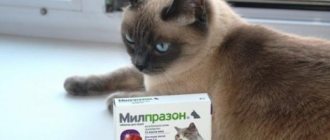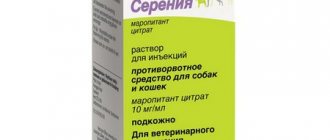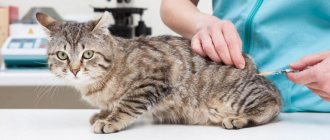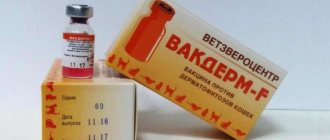Anyone who has one may be faced with the idea of euthanizing their pet. Domestic cats live for about 14 years, so cat lovers will outlive several of their animals in their lifetime. However, it is one thing when a cat lived a full life with the people who love it and died at a very old age, and another thing when it fell ill with a serious illness at an early age. Therefore, opinions are sharply divided on whether to euthanize pets, especially cats.
Use of lidocaine solution in cats
Lidocaine, also known as Xylocaine®
, is an anesthetic used in cats to treat abnormal heart rhythms or cardiac arrhythmias. It is also used as a local anesthetic, such as numbing the skin for suturing.
An anesthetic is a medicine that prevents sensations such as pain. Local or regional anesthesia prevents pain in a limited area or specific area of the body. In contrast, general anesthesia prevents pain, but also causes loss of consciousness and general muscle relaxation.
Lidocaine is a local anesthetic commonly used in veterinary procedures to provide local or regional anesthesia.
Lidocaine is also an antiarrhythmic drug that prevents or treats certain heart rhythm problems. Lidocaine works by preventing the activity of nerve or cardiac cell membranes. By blocking the entry of sodium ions, the cell cannot transmit messages from cell to cell.
Lidocaine is an effective and strong local anesthetic and also works in cats. It may be mixed with epinephrine to maximize the anesthetic effect. Adrenaline constricts blood vessels, allowing lidocaine to remain in local tissues. However, lidocaine with epinephrine should never be used to control heart rate in cats.
Lidocaine is a prescription drug and can only be obtained from a veterinarian or with a prescription from a veterinarian. This medicine is approved for use in animals, including cats.
Veterinarians legally prescribe it as an unlabeled drug.
To do or not to do
Already during the first months of a cat’s life in a family, people become very attached to it, and after several years of life they become full-fledged members of families, and for lonely people they completely replace them. But if an animal rapidly develops a serious illness and begins to experience severe, ongoing pain, the decision to euthanasia is a very humane option and absolutely justified from a moral point of view.
In all other cases, it is not worth going to end the animal’s life. For example, if you are tired of a cat or one of your family members is allergic to its fur, the best thing you can do for it is to find another family where it will be accepted with joy. If an animal scratched you or damaged an expensive thing, then do not rush to get rid of it: it is quite possible that very soon you will become the best of friends. If you feel that the animal does not accept you as its owner, find it a home where it can live a long, fulfilling life.
It is worth carrying out humane euthanasia of a cat only if the veterinarian who examined the cat has come to the conclusion that any attempts to cure it or somehow alleviate its condition will not be effective. Remember that we are responsible for those we have tamed, which means that the grounds for euthanizing a pet must be the most serious. However, in our country the euthanasia of cats is not regulated. Therefore, every cat owner has the right to make such a decision independently, regardless of whether there are serious indications for this procedure, or the animal is simply tired and there is absolutely nowhere to place it.
There is no consensus on this matter among church ministers. If with regard to human euthanasia they are all unanimously opposed, then on the issue of animal euthanasia they have different opinions. Some believe that people can freely dispose of the lives of their animals, while others say that euthanasia of even pets is unacceptable.
Use of lidocaine for cats
Lidocaine is commonly used as a topical and topical anesthetic.
The drug must be administered in close proximity to the wound or operation. It can also be used as an epidural (“spinal”) anesthesia to prevent pain in an area of the body (regional anesthesia).
Lidocaine is also used to treat abnormal heart rhythms or cardiac arrhythmias. The benefits of lidocaine for heart rhythm are generally limited to the treatment of ventricular arrhythmias diagnosed by electrocardiogram (ECG).
The essence of euthanasia
The most important condition for euthanasia is painlessness. The animal should not experience pain or agony during this procedure, otherwise it will look like intentional killing.
Among the most humane methods of euthanasia are medications. This is taking medications that help kill a pet quickly and, most importantly, painlessly. There are many ways to euthanize cats with medication. These include:
- Sedatives. This is the use of Xylazine, a drug used in anesthesia. In large doses, Xlazin can cause respiratory arrest.
- Anesthetics. This includes:
1. Sodium pentobarbital, sodium etaminal - inhibit the central system, causing respiratory arrest; 2. Sodium thiopental – also acts on the central nervous system, induces deep hypnosis, stops breathing; 3. Propofol – stops breathing, induces hypnosis; 4. Droperidol – reduces motor activity; 5.Zolazepam is a narcotic drug used for pain relief.
- Skeletal muscle relaxants. This:
1.Arduan – blocks neuromuscular conduction.
- Antiarrhythmic. Among them is Lidocaine.
Precautions and side effects
Although the drug is generally safe and effective in cats at normal doses when prescribed by a veterinarian, it may cause side effects in some animals.
Lidocaine should not be used in cats with hypersensitivity or allergies to the drug. Xylocaine may interact with other medications. Check with your veterinarian to determine if other medications your pet is receiving may interact with it. Such medications include propranolol, cimetidine, and procainamide.
Caution should be used whenever lidocaine is used in cats, as they tend to be particularly sensitive to the drug, especially overdoses. Lidocaine should not be used in cats with certain heart blocks.
or certain abnormal heart rhythms. Caution should be used if lidocaine is used in cats with liver problems, heart failure, or respiratory problems.
Serious side effects are rare.
At high doses, the most common side effects of lidocaine are drowsiness, unsteadiness, tremors, vomiting or seizures, and sometimes death. Lidocaine is used in the humane euthanasia procedure for cats. Never use it yourself at home, as this drug is one of a combination.
Indications for cat euthanasia
Clear indications for euthanasia of pets are:
- receiving injuries incompatible with life;
- severe deterioration in quality of life due to old age;
- serious incurable diseases that cause pain or irreversible impairment of the functions of the entire animal’s body.
However, as practice shows, animals can easily survive even very severe and dangerous injuries, to the delight of their owners and, to the surprise of veterinarians. No wonder people say that a cat has 9 lives. Therefore, if an animal gets hit by a car or falls from a height, there is always a chance that it will survive. If you are very attached to your cat, then pay for her treatment. With the help of procedures and medications recommended by veterinarians, you can sometimes ensure that she will delight you for many more years.
In other cases, if your veterinarian recommends euthanasia and you are not sure whether it is worth doing, consult with several specialists from different veterinary clinics. Veterinary medicine is not nearly as well developed as human medicine, so where one veterinarian was powerless, a veterinarian from another clinic will be able to help and prolong the life of your pet for a long time.
Lidocaine Dosing Information for Cats
Medications should never be administered without first consulting a veterinarian.
For topical and topical anesthesia, lidocaine is prescribed until the desired effect, numbness, is achieved. For cardiac arrhythmias, an initial dose of 0.5 to 1 mg/kg is given intravenously followed by a continuous intravenous infusion (IV drip) of (5 to 20 mg/kg). kg) per minute. Doses in cats are typically one-fourth the dose in dogs and must be administered very slowly.
After some time, the animal is slowly weaned off the lidocaine infusion. An ECG helps determine whether the arrhythmias have been corrected or whether more lidocaine or another antiarrhythmic drug needs to be given. Multimodal lidocaine analgesia is widely used in cats. The dose of the drug is 20-50 mcg/kg/minute. This dose gives a pronounced analgesic effect. Lidocaine toxicity in cats occurs through overdose or accidental intravenous ingestion.
Reviews from cat owners about euthanasia
Tatyana: “When I could no longer watch my cat slowly and painfully fade away from cancer, I agreed to euthanasia. It was very, very difficult to do, but I don’t regret it, because she just curled up into a ball and fell fast asleep.”
Irina: “I am categorically against the euthanasia of pets. If they could speak and would speak out for it, then there would be no problem. And ending the lives of your pets, who have become friends and family members, is simply a betrayal.”
Victor: “I believe that a man should not be cowardly. When our cat Maruska was hit by a car on the street, my daughter and wife did not leave her side for several days and tried to nurse her, although the veterinarian said that nothing could be done. Then I got tired of looking at it, and I took the cat to the clinic, where she was quickly euthanized. My daughter and wife have already recovered and now we have another young cat, whom we have taught not to leave the house, even on the street, let alone on the road. This is what I will say: people are more valuable than animals, even if we love them very much.”
Irina: “Euthanasia of animals needs to be regulated by at least some laws. My friend gave her healthy, cheerful cat to be euthanized just because she bit her child, who stepped on her tail. When asked how she even decided to do this, she told me that there was no way to throw her out into the street, because she was no longer a kitten and it was almost impossible to give her a home. I don’t communicate with her anymore.”
Pavel: “I work as a veterinarian. Usually, only very sick and old animals are given to us for euthanasia. Owners of cats and dogs are generally adequate people, but sometimes you come across childish and irresponsible ones. They bring animals to be euthanized that could easily be cured.”
Lidocaine hydrochloride – Lidocaini hydrochloridum
Synonyms: xycaine, xylocaine, lidestin. White or almost white crystalline powder. Very soluble in water, soluble in alcohol. Ampoules of 10 ml of 1% solution are produced; 2 and 10 ml of 2% solution and 2 ml of 10% solution. A powerful local anesthetic for cats, effective for almost all types of anesthesia. Its anesthetic activity is 2.5 times greater than novocaine and lasts 2 times longer. Well tolerated, does not have a local irritating effect. It is not an antimetabolite of para-aminobenzoic acid, therefore it is compatible with sulfonamides. It has an antiarrhythmic effect, increases the permeability of membranes for potassium ions, and improves conductivity in Purkinje fibers.
Lidocaine is used for all types of local anesthesia:
- for infiltration – 0.25-0.5% solution
- for conductor – 1-2%
- for superficial – 1-2%
For infiltration anesthesia, use no more than 10 ml/kg of the drug, and for conduction anesthesia - 1 ml/kg. It is one of the most effective drugs that eliminates ventricular extrasystole and ventricular tachycardia. Lidocaine is administered slowly intravenously as an antiarrhythmic agent at a dose of 2 mg/kg. Not. It is recommended to prescribe adrenaline.
Cats develop seizures when lidocaine is administered, so for them the dose is reduced to 0.2 mg/kg. Lidocaine is quickly metabolized in the body, therefore, to maintain the therapeutic effect, it is necessary to establish a constant infusion of the drug at a dose of 50-100 mcg/kg/min. With rapid entry of the drug into the vascular bed, a decrease in blood pressure and collapse may be observed. In this case, ephedrine and other adrenergic agonists should be administered for therapeutic purposes.
In emergency cases, with the development of life-threatening cardiac arrhythmias for the animal, appropriate antiarrhythmic therapy is indicated, including intravenous administration of lidocaine (20 mg/kg, 3 times; if necessary, continuous infusion at a rate of 40-80 mcg/kg/min). 2-4 mg/kg is administered to animals intravenously or intramuscularly, and to cats - 0.2-1 mg/kg for 4-5 minutes.
Contraindications: in what cases should it not be used?
- Kidney failure.
- Liver disorders.
- Pregnancy, lactation.
- Stomach ulcer.
- Allergy.
If the risk of developing anaphylactic shock in an animal is low, then it makes sense to resort to this drug.
Lidocaine solution for cats is used if the expected result from the injection exceeds the negative side effects, namely cardiac arrest, anaphylactic shock, respiratory paralysis, collapse. Veterinarians claim that the negative effect of the drug on cats is not considered a pattern, but rather an individual characteristic of the animal. The drug also acts negatively if the dosage is not followed.
Learn about essential drugs in animals
- Instructions for use of Dirofen in cats
- Instructions for use of Vetom in cats. Calculate the optimal dose of the drug for cats. Explore the breadth of Vetom's probiotic effect for the comprehensive treatment of multiple pathologies in cats
- Instructions for using multifel in cats. The optimal dose of the drug for cats. Explore the breadth of the preventive effect of Multifel-4 for the comprehensive fight against multiple infections in cats
- Instructions for use of fosprenil in cats
- Instructions for the use of Kotervin in cats. Explore the breadth of the anti-inflammatory, saluretic effect of Cotervin for the complex treatment of many pathologies in cats
- Instructions for use of Cat Bayun in cats. Explore the breadth of sedative effects of Kotbayun for the complex treatment of many pathologies in cats
- Instructions for the use of feliferon in cats. Explore the breadth of the immunomodulatory effect of feliferon for the complex treatment of many pathologies in cats
- Instructions for using stronghold in cats. Explore the breadth of the antiparasitic effect of Stronghold Spot On for cats.
- Instructions for use of Milbemax in cats. Milbemax - for the complex treatment of many pathologies in cats
- Information about the drug Gamavit, features of its use are provided, excerpts from the instructions are collected, doses for cats are indicated, indications and contraindications for the use of Gamavit for cats
- Instructions for the use of spirovet in animals. Calculate the optimal dose of the drug in dogs, cats, pigs, cows, sheep, goats. Explore the breadth of the antibacterial effect of Spirovet in veterinary medicine
- Instructions for the use of tiamulin in birds and animals. Calculate the optimal dose of the drug in dogs, cats, pigs, cows, sheep, goats, chickens, turkeys, broilers. Explore the breadth of tiamulin's antibacterial effects in veterinary medicine
- Instructions for use of Sevaxel in animals. Calculate the optimal dose of the drug in dogs, cats, pigs, cows, sheep, goats. Explore the breadth of sevaxel's antibacterial effects in veterinary medicine
- Instructions for the use of thiam-oxy in animals. Calculate the optimal dose of the drug in pigs. Explore the breadth of antibacterial effects of thiam-oxy in veterinary medicine
- Instructions for the use of tetravet in animals. Calculate the optimal dose of the drug in dogs, cats, pigs, cows, sheep, goats. Explore the breadth of tetravet's antibacterial effects in veterinary medicine
- Instructions for the use of TAF 25% in chickens, turkeys and other animals. Calculate the optimal dose of the drug in birds. Explore the breadth of the antibacterial effect of TAF 25% a in veterinary medicine
- Instructions for the use of cefkinome in animals. Calculate the optimal dose of the drug in pigs, cows, sheep, goats, horses, dogs and cats. Explore the breadth of cefkinome's antibacterial effects in veterinary medicine
- Instructions for the use of intramycin in animals. Calculate the optimal dose of the drug in dogs, cats, pigs, cows, sheep, goats. Explore the breadth of intramycin's antibacterial effects in veterinary medicine
- Instructions for the use of inotil in animals. Calculate the optimal dose of the drug in dogs, cats, pigs, cows, sheep, goats. Explore the breadth of inotil's antibacterial effects in veterinary medicine
- Instructions for the use of cobactan in dogs. Calculate the optimal dose of the drug. Explore the breadth of the antibacterial effect of cobactan in cats
- Instructions for the use of coliside in animals. Calculate the optimal dose of the drug in birds, pigs, cows, sheep, goats. Explore the breadth of coliside's antibacterial effects in veterinary medicine
- Instructions for the use of Marbox in animals. Calculate the optimal dose of the drug in dogs, cats, pigs, cows, sheep, goats. Explore the breadth of Marbox's antibacterial effects in veterinary medicine
- Instructions for the use of inosel in animals. Calculate the optimal dose of the drug in dogs, cats, pigs, cows, sheep, goats. Explore the breadth of the antibacterial effect of the drug inosel in veterinary medicine
- Instructions for the use of oxytetra in animals. Calculate the optimal dose of the drug in dogs, cats, pigs, cows, sheep, goats. Explore the breadth of oxytetra's antibacterial effects in veterinary medicine
^Top
Where to do euthanasia: at home or in a clinic
For an additional fee, today it is possible to carry out the procedure of euthanasia of an animal at home. There are positive and negative aspects to this.
On the one hand, the animal will not experience additional stress from a visit to the clinic and will die in its usual home environment, although if you regularly, during the cat’s life, visited the veterinary hospital with him for routine vaccinations or examinations, and the animal is calm about this , then this will be the best option.
For impressionable owners, euthanizing a pet at home may subsequently evoke unpleasant emotions and memories associated with the place and objects surrounding the cat during the procedure, although going to the clinic may feel like a betrayal towards the animal. Therefore, you need to prepare psychologically and choose a less painful option for yourself.
Having weighed the pros and cons, and decided on the place of euthanasia, the owner, despite the severity of the situation, needs to take care of the quality of the procedure itself so that it is carried out as humanely as possible.
What should low-income people do or if there is a need to euthanize many cats!?
The famous musician Vis Vitalis said in the Express newspaper article “Modern cathunters can earn millions from killing cats” that antifreeze was used to poison his beloved pet cat Simych and the other 30 basement cats with whom he hung out:
“Most likely, they used antifreeze, which cats like the taste of, but after it they die painfully...”
Further, on Twitter, he explained that the lethal dose for a cat is one teaspoon - 10 grams.
In other words, a liter of Antifreeze costing 100 rubles is enough for 100 cats. Those. ruble for a cat...
Another specialist, veterinarian Andrei Levakovsky, reported in the LADA publication that cats can be instantly affected by the so-called. “cockroach poison”, which is freely sold in many stores at a price of less than 100 rubles.
“The animals’ bodies were swollen in the abdominal area. Presumably, the cats were poisoned with cockroach poison, which contains fipronil. One syringe of this substance is enough to poison 20 kittens and 5-10 adult cats. The poison could have been mixed with food and placed near the basement, as the animals lay chaotically. This means they tried to escape,” said Andrei Levakovsky.
What's the result?
Now you generally know how pets are euthanized. We told you how much it costs to painlessly euthanize a dog or cat, what drugs are used for the procedure and what the essence of its stages is.
Finally, let us remind you once again that the decision about whether or not to do euthanasia is up to you. But still, it is often more humane to euthanize a cat than to condemn it to meaningless suffering that can last for many more weeks.
By choosing euthanasia, you will be allowing your four-legged family member to pass away with dignity, and it will be the best thank you for the joy he has given you over the years.
How much does euthanasia cost?
The price of the service depends on the weight of the animal. The larger the pet, the higher the consumption of medications, and therefore your financial costs. So it is always less expensive to euthanize a cat than a dog.
How much does it cost to euthanize a dog or other pet, at least in approximate figures? In Moscow, the price varies from 1,000 rubles for an animal weighing up to 1 kg to 3,500 rubles and more if it is necessary to euthanize an 80-kg representative of a particularly large breed.
The price increases when ordering funeral services at the same time. You will have to pay extra for cremation of the body, and individual cremation with the collection of ashes in an urn will cost more than burning the remains in a common cremation chamber.











